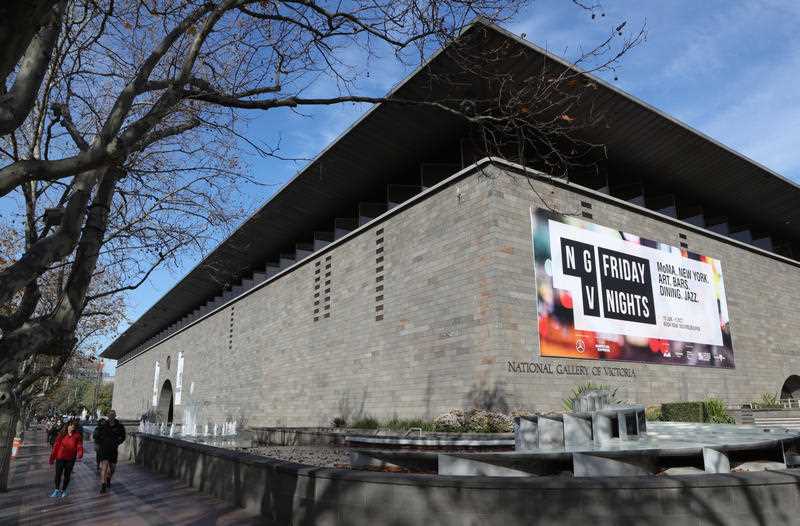Standing under the sweeping curves of Melbourne’s Forward Surge sculpture, Jon Hazelwood points a tablet at the ground and a wild garden springs to life underfoot.
Barren grass is replaced by layers of plants and colourful flowers on the screen – a visualisation of what will be a mammoth urban garden, home to everything from the blue banded bee to the eastern spinebill.
The garden will cover 18,000 square metres at the Melbourne Arts Precinct, forming a connective tissue between the precinct’s buildings and a sanctuary away from the hubbub of St Kilda Road, with its screeching trams and the hoards of commuters at Flinders Street station.
Each square metre will foster at least 20 species of plant in an ambitious attempt to “rewild” Melbourne; a worthy cause given Australia’s tumbling biodiversity, and an example of the global push to bring nature back to cities.
“It needs to be a spectacle for it to be successful, but also it has to work, and it has to be changing,” Hassell public realm design director Mr Hazelwood says.
The elevated garden forms part of the $1.7 billion Melbourne Arts Precinct transformation, slated to be completed in about 2028.
Built on decking, the garden will start at the upgraded Arts Centre Melbourne, wrap around the back of the NGV International, and then lead visitors to the new The Fox: NGV Contemporary once it’s built.
Its huge size equates to a huge effort for designers, with Hassell among collaborators and exploring up to 800 plant species for inclusion.
Not all of them will be natives, with the layered planting style intended to ensure the garden is constantly changing without much interference, and pollinating seasons are extended.
Designers have already virtually planted the entire 18,000 square metres of garden and are mapping how it performs through the year – from how “friendly” or dominating plants are, to how it looks through the seasons.
They’re also auditing the precinct’s existing biodiversity to ensure it’s benchmarked in the future.
“What is replaced in our cities is often very, very overly simplified, for a whole lot of reasons around management, maintenance (and) what’s available,” Mr Hazelwood says.
“One of the core benefits and drivers for this scheme is to make sure this place is alive with people but also alive with the native and endemic fauna of this area.
“That sounds lovely, but I don’t believe it’s been done on this scale in terms of 18,000 square metres of that kind of planting in this area.”
Melbourne’s upcoming urban garden echoes global calls to rewild cities, with architect and artist Usman Haque pointing to the “Re:Wild Royal Docks” project, aimed at creating a 10-year vision for wilding East London.
Mr Haque served as creative director on the project from 2020 to 2021 and says humanity’s future depends on it reconnecting with nature.
He spoke with Melbourne Arts Precinct Corporation public realm and precinct manager Bree Trevena at the recent Data Informed Design conference.
“The big question, at least for me, is: do we want to survive?” Mr Haque told Dr Trevena.
“If we do, then it’s fundamentally important to recognise our relationship to the environment, to other species, to natural systems, and the fact that we’re all kind of interdependent.”
The East London project saw designers focus on biodiversity, and set out plans for a network of green spaces and “wild places”, an educational and cultural events program, and rewilding activities.
However, while some might assume everyone loves green spaces, people can feel negatively about them when the trade-off is a resource they’ve come to depend on, Mr Haque says.
“The real complexity of an urban wilding scheme turns out not to be the natural systems and the non-human interventions, but the people and their complexity,” he says.
The Melbourne Arts Precinct Transformation team hopes the urban garden will be a place where locals and visitors alike come to gather, especially given the area – Southbank – is Victoria’s most densely populated.
By Cassandra Morgan in Melbourne



